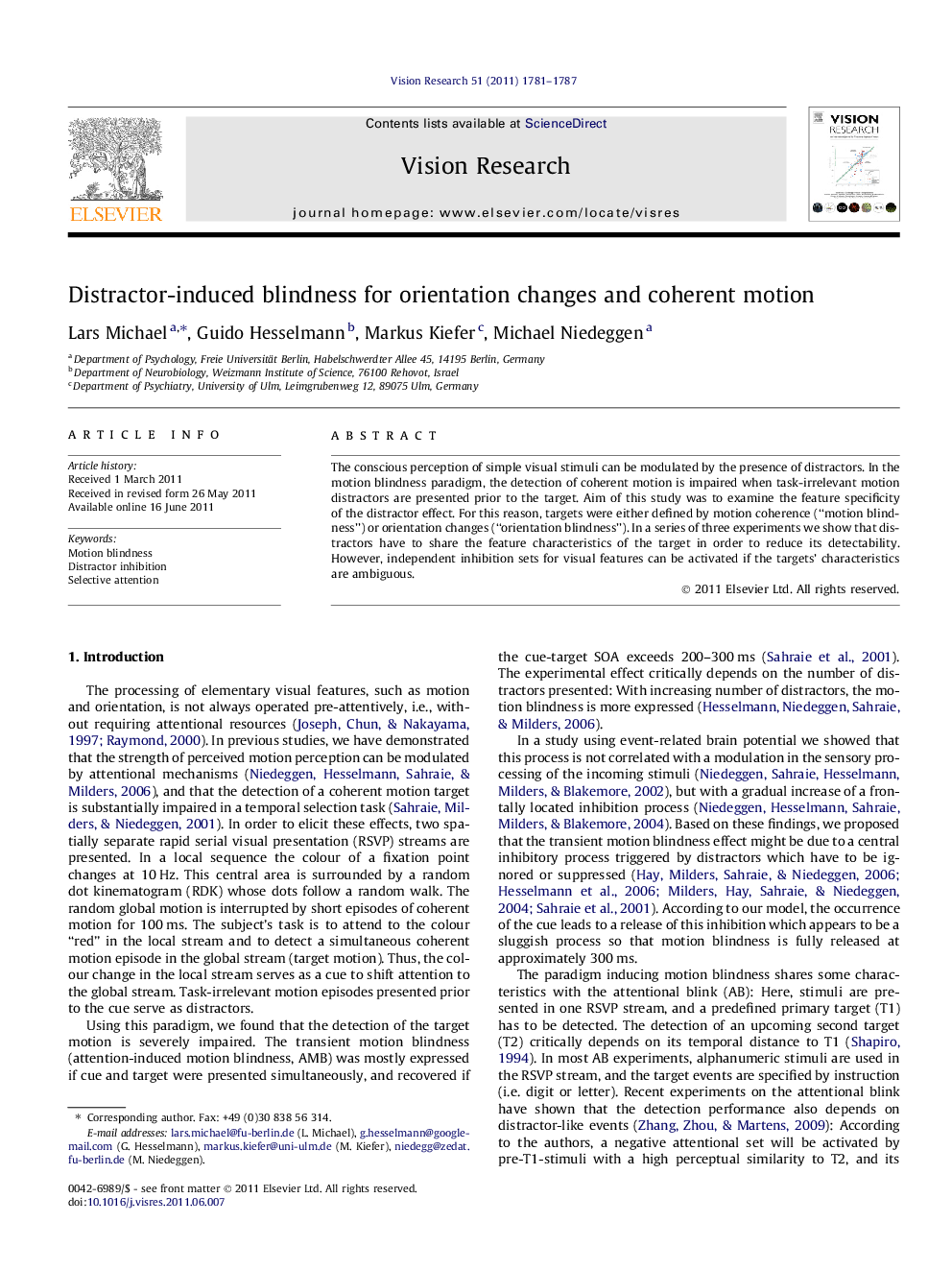| Article ID | Journal | Published Year | Pages | File Type |
|---|---|---|---|---|
| 4034300 | Vision Research | 2011 | 7 Pages |
The conscious perception of simple visual stimuli can be modulated by the presence of distractors. In the motion blindness paradigm, the detection of coherent motion is impaired when task-irrelevant motion distractors are presented prior to the target. Aim of this study was to examine the feature specificity of the distractor effect. For this reason, targets were either defined by motion coherence (“motion blindness”) or orientation changes (“orientation blindness”). In a series of three experiments we show that distractors have to share the feature characteristics of the target in order to reduce its detectability. However, independent inhibition sets for visual features can be activated if the targets’ characteristics are ambiguous.
► Attention-induced motion blindness extends to other basic visual features. ► Orientation blindness occurs when orientation changes are presented prior to the cue. ► Blindness effects occur depending on the definition of the target. ► The proposed inhibitory process shares characteristics of a negative attentional set.
